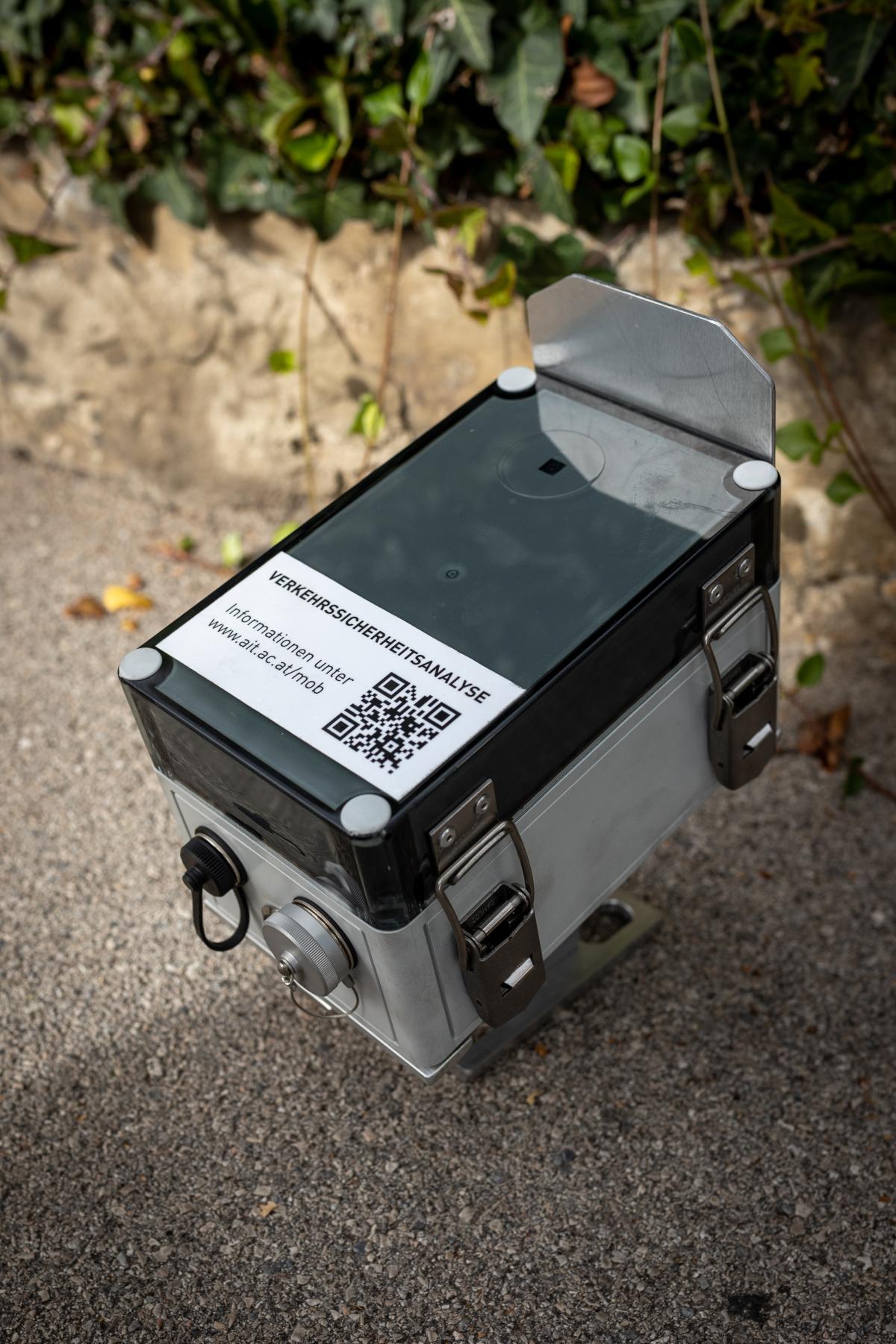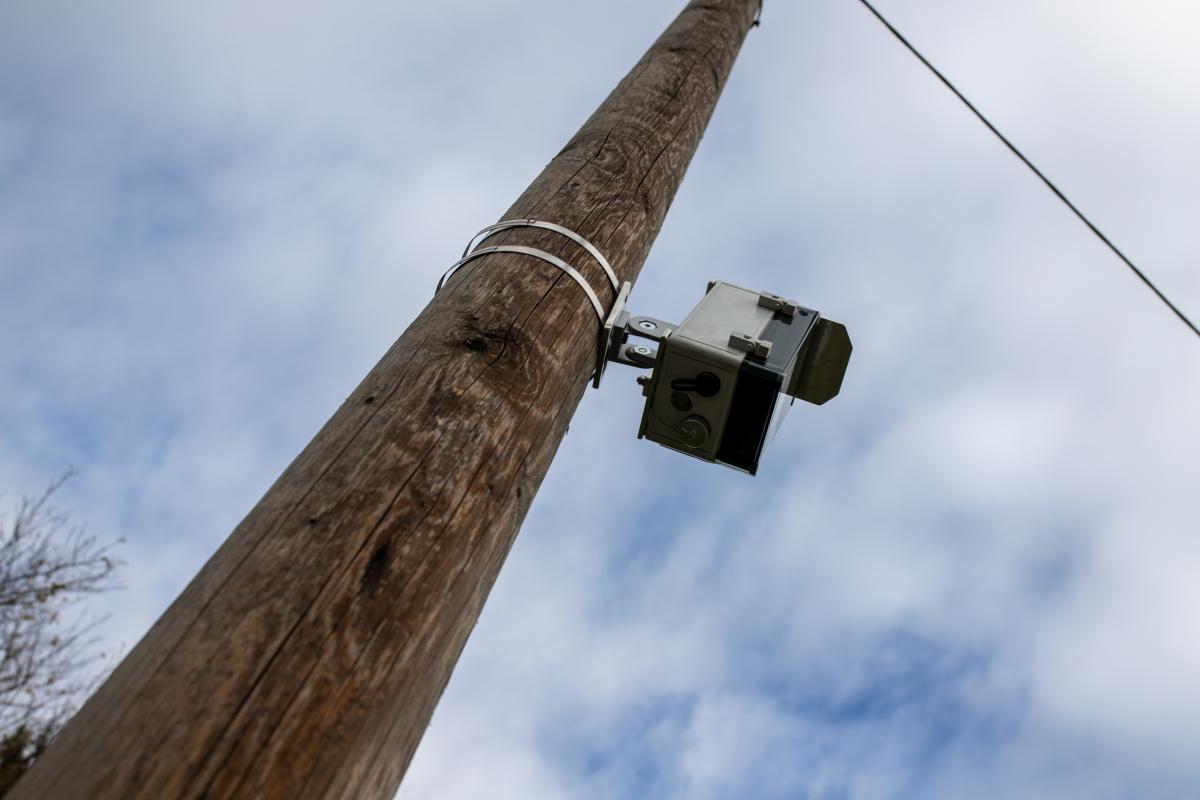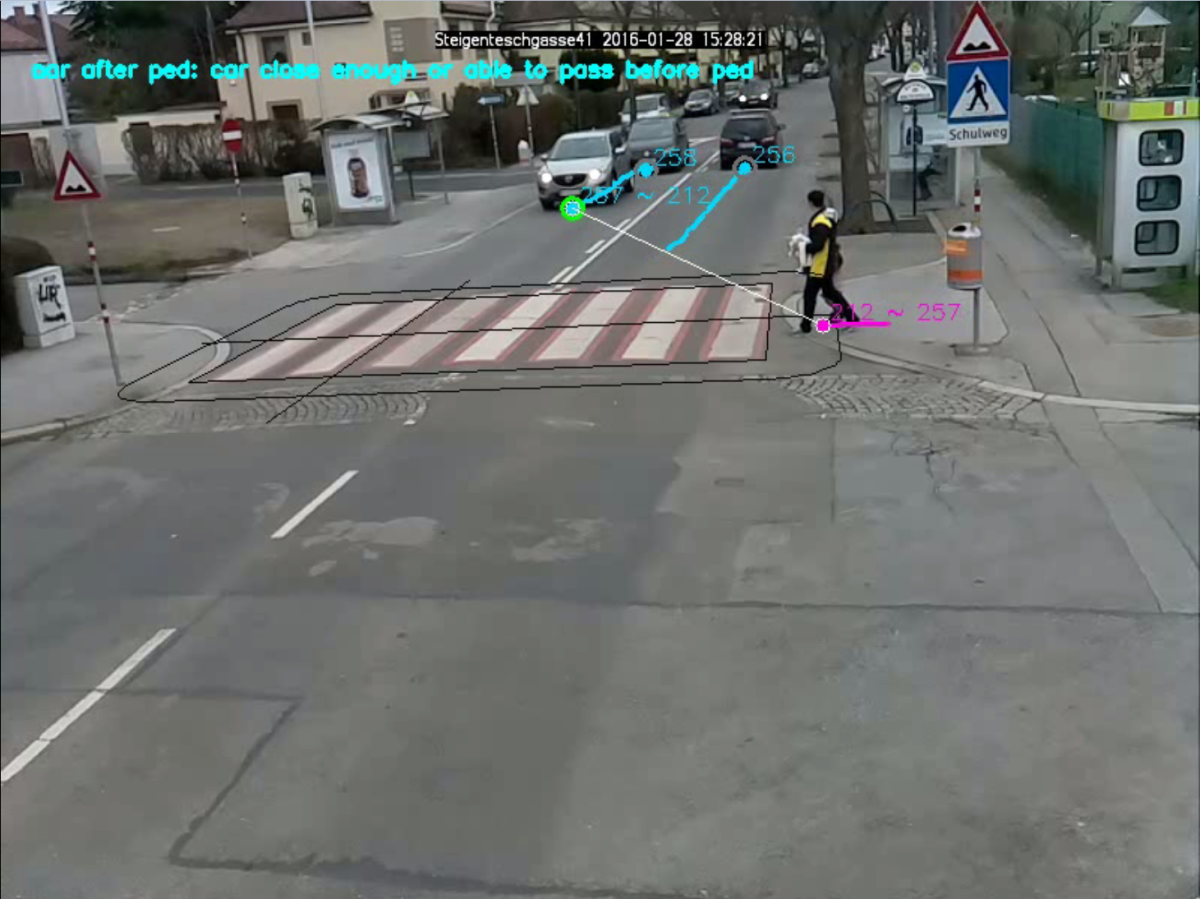Initiative details
Data oriented and supported measures to protect vulnerable road users by understanding behavioural aspects at different infrastructural sections is mandatory for professional and successful pro-active road safety work. Usual data collection within the road safety sector is provided by short-timed data collection by hand or police-initiated reports after crashes happened. For better results in research and infrastructure planning, much more data over longer timespans is needed to provide better understanding on traffic flow mechanics, human behaviour and infrastructural effects on both former topics.
With the Mobility Observation Box (MOB) an image sensor based solution to collect, measure and evaluate trajectory data that integrates seamless into traffic flows without interfering them was developed to overcome the data collection issues. MOB is able to collect data for up to 14 consecutive days on-site with machine learning based post-processing of relevant safety KPIs such as TTC and PET. The technology is battery-powered and can be mounted nearly everywhere due to its lightweight.
With the Mobility Observation Box (MOB) an image sensor based solution to collect, measure and evaluate trajectory data that integrates seamless into traffic flows without interfering them was developed to overcome the data collection issues. MOB is able to collect data for up to 14 consecutive days on-site with machine learning based post-processing of relevant safety KPIs such as TTC and PET. The technology is battery-powered and can be mounted nearly everywhere due to its lightweight.
Initiative date
to
Who was/is your target audience?
Policy makers
Public authorities
Children 0-16
Young adults 17-25
Adults
Parents
Seniors
Company employees
Car drivers
Car drivers – professional
Educational staff
Public transport
Van drivers
Lorry/truck drivers
Cyclists
Micromobility riders
Powered two wheeler riders (excluding micromobility)
Pedestrians
Others
Topic
Knowledge building and sharing
Create awareness
Education in school or in community organizations
Improve vehicles and infrastructure
Provide alternative solutions
Organisation details
Mobility Observation Box
School / Research centre
Austria
Vienna
Contact name
Paul Rosenkranz
Telephone number
+4366488904303
paul.rosenkranz@ait.ac.at
Website link
Project activities
If you work together with external partners, list the most important partners and briefly describe their role.
SLR Engineering GmbH and Transoft Solutions Inc., software engineering companies are optionally supporting AIT in trajectory calculations. With these trajectories the post-processing in safety KPI evaluation as well as providing results and interpretations is done in-house at AIT.
Please describe the project activities you carried/are carrying out and the time period over which these were implemented.
Since early 2016 data collection work was carried out with MOB applications and focused on safety work at signalized and non-signalized intersections. These operations depict a baseline where MOB is used to provide extensive data on crashes, near misses and human behaviour on these critical infrastructure elements as well as after changes evaluations.
With more available training data for the machine learning processes at post-processing, more applications were possible such as the evaluation of lane changes, on- and off-ramp behaviour and automated driving.
In 2023 MOB will be used in two newly started HEU projects, AugmentedCCAM and AMIGOS, to provide data collection on C-ITS and automated driving applications as well as changes in infrastructure due to the implementation of new mobility services. It will help to gain knowledge on changes in and influence on behavioural aspects to result in less conflict situations and fewer affected traffic participants.
With more available training data for the machine learning processes at post-processing, more applications were possible such as the evaluation of lane changes, on- and off-ramp behaviour and automated driving.
In 2023 MOB will be used in two newly started HEU projects, AugmentedCCAM and AMIGOS, to provide data collection on C-ITS and automated driving applications as well as changes in infrastructure due to the implementation of new mobility services. It will help to gain knowledge on changes in and influence on behavioural aspects to result in less conflict situations and fewer affected traffic participants.
Evaluation
What has been the effect of the activities?
As MOB is used in both scientific and customer projects and applications, two main effects are visible. On the one hand, the massive data provision can lead to new findings in the scientific area on crash research activities. With several national and worldwide projects, the MOB collected and is collecting data on several different infrastructural elements as well as on traffic participant groups. With strong focus on VRUs and new mobility systems alone three projects around 200k€ each were supported with a MOB data layer.
At a customer level, MOB is used to provide consulting on behavioural aspects resulting in changed infrastructure. With provided data throughout before-after analysis it was possible to reduce the number of dangerous situations/near misses and crashes by 20-30% dependent on specific infrastructural parameters.
Both customer segments include one cutting theme: general results on infrastructural design to support all traffic participants based on results coming from MOB analysis on all different levels such as local, national and international level. Also, the operational domain of automated driving was affected by results coming from MOB analysis in a way that VRUs were better integrated in AV-side prediction models as well as infrastructural safety indexes resulting in a combination of road condition monitoring and intersection of MOB data.
At a customer level, MOB is used to provide consulting on behavioural aspects resulting in changed infrastructure. With provided data throughout before-after analysis it was possible to reduce the number of dangerous situations/near misses and crashes by 20-30% dependent on specific infrastructural parameters.
Both customer segments include one cutting theme: general results on infrastructural design to support all traffic participants based on results coming from MOB analysis on all different levels such as local, national and international level. Also, the operational domain of automated driving was affected by results coming from MOB analysis in a way that VRUs were better integrated in AV-side prediction models as well as infrastructural safety indexes resulting in a combination of road condition monitoring and intersection of MOB data.
Please briefly explain why your initiative is a good example of improving road safety.
The Mobility Observation Box (MOB) makes it possible to measure the safety of transport infrastructures according to objective criteria and thus make them comparable. Once data collection is done, machine learning algorithms automatically recognize different groups of road users (pedestrians, cyclists, cars, trucks, e-scooters, etc.), detects them, evaluates their traffic behaviour using surrogate safety measures and provides a basis for targeted mitigation measures. Conflict situations can be observed and evaluated objectively and for a desired period of time. The battery-operated system allows a quick and uncomplicated installation and deinstallation of the box, not requiring supplemental power source. Due to its small size, a registration of all traffic participants can be realized without distraction or influence.
The collected video data is the basis of the risk-based evaluation procedure, using machine learning algorithms and artificial intelligence. Using a unique video-based surrogate safety technology, the displacements of all road users within a traffic scene can be monitored to a high degree of precision, in a repeatable and unobtrusive way. Each road user is detected, classified, and tracked.
This data is then used to assess and provide metrics on road safety (such as near-collision and over-speeding incidents), as well as traffic flow conditions (such as volumes and speeds). A better understanding of these collision precursors helps practitioners improve infrastructure without relying solely on historical collision data or manually gathered data.
The collected video data is the basis of the risk-based evaluation procedure, using machine learning algorithms and artificial intelligence. Using a unique video-based surrogate safety technology, the displacements of all road users within a traffic scene can be monitored to a high degree of precision, in a repeatable and unobtrusive way. Each road user is detected, classified, and tracked.
This data is then used to assess and provide metrics on road safety (such as near-collision and over-speeding incidents), as well as traffic flow conditions (such as volumes and speeds). A better understanding of these collision precursors helps practitioners improve infrastructure without relying solely on historical collision data or manually gathered data.
How have you shared information about your project and its results?
The initiative has won both German DEKRA Award and Austrian Ö3 Road Safety Award. With project results on national and international research projects, results were disseminated within consortiums, conferences and project reports, such as Drive2TheFuture (H2020), SEED (local, AT) and customer projects, describing a small sample out of various projects.


